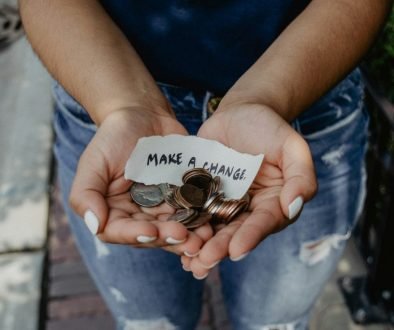Nonprofit Giving is Down: Looking Beyond the Numbers
A new report was released showing for the first time since 2012, donations to nonprofits have been going down. This naturally is a concerning trend that reflects broader economic and social challenges. On the surface, one might be tempted to write it off as just a minor hiccup. After all, every industry including nonprofits go through turbulent times. However, as we navigate this landscape, it is essential to understand the underlying factors contributing to this downturn while fostering a sense of hope and community engagement that can lead to renewed generosity.
Economic Uncertainty and Inflation
The economic climate has been turbulent, with rising inflation and uncertainty affecting household budgets across the globe. According to the Fundraising Effectiveness Project, while donations had shown an upward trend for nearly a decade, 2022 marked a significant shift with a 1.7% decline in overall giving and a 10% drop in the number of donors.
A potential explanation can be found if we start really dissecting the data. Sixty seven percent of total donations were made by individuals in 2023, totaling over $340 billion. This can be particularly troublesome when combined with the financial situation for adults, with 72% of adults reporting they were financially stable, down from 78% in 2021. Meanwhile, 65% of U.S. consumers stated they live paycheck to paycheck. This downturn can be attributed to many individuals feeling financially strained, leading them to prioritize essential expenses over charitable contributions. As inflation impacts disposable income, many potential donors are forced to make difficult choices about where their money goes. Understandably, one of the main reasons why people say they cannot donate is that they simply cannot afford it.
Polarization and Deteriorating Social Fabric
In addition to economic factors, perhaps one of the unexplored explanations, however, of this decline in donations is because the polarization within society has created a challenging environment for nonprofits. The social fabric that traditionally was responsible for binding communities together has been fraying, with divisions often overshadowing collective efforts for good. You can readily see this by just looking out your window to see how many people stop and talk with one another in your neighborhood, or when the last time you had a random conversation with a stranger while waiting in line for your latte. There has been a tangible, visceral decline in the ability to connect with other humans, and this is perhaps the greatest threat facing our culture today.
When viewed in the context of nonprofits, this polarization can lead to decreased engagement in charitable activities, as individuals may feel disconnected from causes that do not align with their personal beliefs or experiences. The decline in donor retention rates—down 21.8% for new donors from 2021 to 2022—highlights this disconnect, suggesting that many individuals are not finding the sense of community or shared purpose that encourages ongoing support for nonprofits.
A Path Forward: Rebuilding Community Connections
The origin of nonprofits has its roots in communities banding together in times of need, mending to the social and physical wounds of our neighbors. We can sit here and talk all day about the decline in giving, zombie nonprofits who have faded into irrelevancy, and an erosion in trust in nonprofits, but many of these are more symptoms of the larger problem of the social fabric in which we are all living.
This all reminds me of an old Chinese saying, “Tóng bìng xiāng lian”, roughly translated means “sympathize with each other for our shared experiences”. It’s easy to get caught up in a nonprofit’s mission when you are living and breathing it, but most of the people you would like to get donations from do not have that shared experience. Instead, nonprofit leaders need to think of how to reach new donors. Part of that is of course raising awareness for your cause. But a larger portion is actually understanding your donor beyond a demographic.
Your donor’s name is not “28-year-old female”, or “A 45-year-old from Phoenix, AZ”. That person doesn’t get up in the morning because they are a “College graduate between the ages of 18-30”, and not because they want to donate to you. Even if you’re a nonprofit, you have to think about what you are giving to them if you want something from them.
For this, I created the MASTER model, a framework that helps nonprofit leaders gain a deeper understanding of their donors by looking beyond demographics. This approach enables organizations to build stronger connections with their supporters and ultimately, drive more effective fundraising efforts.
As we strive to revitalize the social fabric of our communities, let us remember that the true power of nonprofits lies not in their ability to solicit donations, but in their capacity to build bridges between people and foster a deeper sense of empathy and understanding. We must remember that missions are nothing without the people who support them, and sometimes the best equipment we have for achieving these missions is not our words, but theirs.
To learn more about how the MASTER model can help your nonprofit organization, reach out to schedule a call today.

